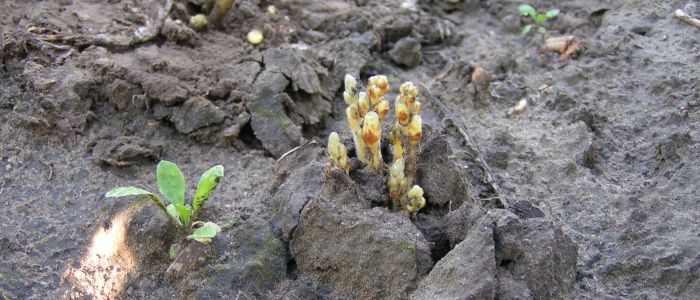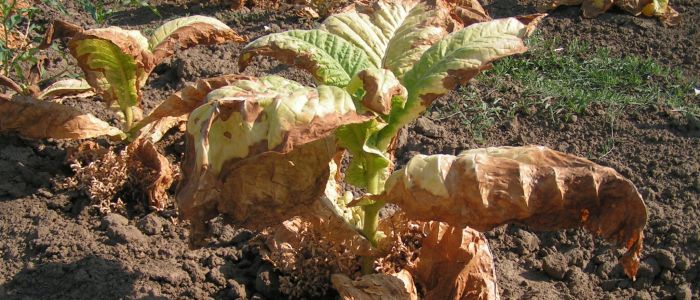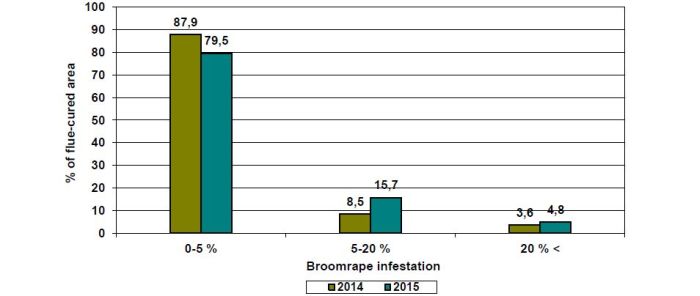Survey on broomrape infestation of Hungarian tobacco fields
Obligate parasite broomrape species (Orobanche ramosa L., Orobanche cumana Wallr.) cause considerable damage in Hungarian tobacco fields every year.
The protection against broomrape, because of its special life cycle, has not been solved in tobacco yet. Broomrape seed can survive in soil for decades, therefore it is not a solution to avoid growing tobacco in the given field for many years.
There is no effective chemical protection against it, the only possibility is to move tobacco production to another field. Considering that the availability of growers’ fields suitable for tobacco production is limited, and to find new field with irrigation and good infrastructure makes more difficult to move production.
The protection against broomrape is a significant problem in other countries as well, and there is no known general solution.
Hungarian tobacco companies together with research institutes have been looking for solution for many decades.
In order to get more precise view on broomrape infestation of Hungarian tobacco fields, Hungarian companies – Dofer Zrt., ULT Hungary Zrt. – started a survey program involving Agroport-D Kft.
The aim of the three year program (2014-2016) is to evaluate the infestation rate of each tobacco field between 15 and 30 July. The fields are divided into 3 categories:
- 0-5% infestation: Broomrape is present in the field.
- 5-20% infestation: Broomrape sporadically appeared in the field. In spite of the infestation, successful tobacco production is possible with the application of proper agrotechniques.
- 20% < infestation: Successful tobacco production is not possible in the field, field change is necessary.
Every tobacco field was surveyed, handling flue-cured and burley data separately.
The results of 2014 and 2015 can be seen in Figure 1. and Figure 2. The results of 2014 and 2015 confirm – that we have experienced in the fields – the higher infestation rate compared to previous years. This year was exceptionally warm and dry, so both factors contributed to the high infestation rate and to that the broomrape appeared and made damage earlier than usually.
The flue cured fields have higher infestation rate compared to burley fields, due to the farmers’ limited possibility to change flue-cured fields.
More than 3% of the current tobacco production area is highly infested, which means that those areas are practically unsuitable for tobacco production. In 2015, more than 15% of the tobacco production area is in the category of 5-20% infestation, which means that broomrape can accumulate and the field could be unsuitable for production in the future.
2016 is the final year of the survey, which results will be published.
This survey is linked to the research of AERET. There was broomrape and seed collection from different areas, which samples are examined in France.
There were many trials set in order to solve the problem of broomrape in the past, but only with small results were obtained.
It was promising and effective the use of chlorsulfuron herbicide-resistant tobacco varieties against broomrape. The chlorsulfuron is no longer available on the market, so this method can not be used in practice now.
We will take steps toward chemical protection in the future to decrease the damage caused by this serious parasite.
Figure 1. Broomrape infestation of Hungarian flue-cured tobacco fields, 2014-2015
Figure 2. Broomrape infestation of Hungarian burley tobacco fields, 2014-2015

Fekete Tibor, ULT Hungary Zrt., Orosz Tibor, Dofer Zrt., Varga Lajos, program coordinator, Agroport-D Kft.





